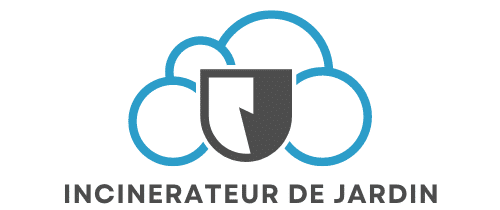Mastering twitter scraping: tools and techniques uncovered

Unlocking the potential of Twitter scraping fundamentally transforms data analysis and marketing strategies. With the right tools and techniques, such as Twint, you can extract insights efficiently and anonymously. This guide reveals effective methods for gathering tweets, user data, and trends while addressing legal considerations and best practices. Dive into instantly actionable tips, troubleshooting advice, and expert recommendations to elevate your Twitter scraping game.
Overview of Twitter Scraping
Twitter scraping involves harvesting data from the platform to gain insights for various applications, from market research to sentiment analysis. The act of scraping can be achieved through a few different methods. Some opt for using the Twitter API, which requires authentication and respects rate limits, whereas tools like Twint allow data collection without such constraints. Twint, in particular, can extract nearly unlimited tweets, although users should remain mindful of potential Twitter-imposed limitations.
Avez-vous vu cela : What are the best practices for integrating SSO (Single Sign-On) in an enterprise environment?
When you start twitter scraping, various tools and techniques offer distinct benefits. Examples include utilizing Python libraries like Beautiful Soup for structured content or Scrapy for more extensive data crawls. While successfully scraping provides rich datasets for analysis, it implies legal and ethical considerations such as compliance with Twitter's terms of service and privacy regulations like GDPR.
Ethical scraping involves not overloading the server, and respecting privacy restrictions—failing to adhere to these could result in IP bans or legal repercussions. Ultimately, choosing the right tool and method hinges on your goals and an understanding of the ethical landscape surrounding Twitter scraping.
A découvrir également : What are the steps to configure a highly available PostgreSQL cluster using Patroni?
Tools and Technologies for Twitter Scraping
Overview of Tweepy and Snscrape
In the realm of python libraries for Twitter scraping, Tweepy and Snscrape stand out as robust choices. Tweepy, widely recognized for its integrated access to the Twitter API, enables precise automated Twitter data collection. This tool allows developers to manage tweets, timelines, and more using simple Python scripts. Despite offering advanced data query capabilities, its operation is constrained by various API-specific limitations like a seven-day date range restriction. Unlike Tweepy, Snscrape doesn’t require API credentials, providing a more flexible and unrestricted path to scrape tweets, including historical data without facing caps on tweet retrieval.
Introduction to Twint
Where traditional scraping tools encounter hurdles due to API limits, Twint on GitHub emerges as a prominent alternative to traditional Twitter scraping. This tool, crafted in Python, bypasses the need for Twitter API access entirely, permitting users to scrape massive datasets efficiently. Twint can extract content such as tweets and user profiles without strict rate limitations, making it suitable for scraping Twitter data anonymously.
Exploring APIFY for Comprehensive Scraping
APIFY offers a versatile platform for extensive Twitter scraping efforts. As a tool built for ease of use, it excels in extracting user data from Twitter by supporting integration with cloud services and popular applications. APIFY’s vast collection of pre-built tools for automated Twitter scraping facilitates processes such as scraping Twitter for market research and sentiment analysis, providing opportunities to monetize data scraping through APIFY’s store. This positions APIFY as an efficient resource for both individual and enterprise-level web scraping endeavors.
Techniques for Effective Twitter Data Extraction
Utilizing REST API and Streaming API
When it comes to twitter scraping, understanding the various Twitter API options is crucial. The REST API is designed for querying specific structured information, making it invaluable for automated twitter data collection. It allows fetching tweets, user data, and metadata, which can be vital for scraping twitter for market research. However, there are limitations such as rate limits and the inability to access historical tweets beyond a certain scope.
On the other hand, the Streaming API provides real-time access to Twitter’s so-called firehose, essential for scraping live twitter feeds. This approach is particularly useful for tracking ongoing events or trending topics, helping analysts to stay updated with real-time data without the need to scrape tweets post-event.
Best Practices for Scraping Tweets and User Data
Employing best practices while engaging in twitter scraping involves respecting rate limits and adhering to ethical guidelines. It's advisable to be mindful about scraping twitter hashtags and ensure compliance with twitter's data privacy policies. Tools like Tweepy can be instrumental in these efforts, allowing users to integrate the Twitter API within Python environments effectively. Meanwhile, libraries like Snscrape offer alternatives for scraping tweets from twitter without requiring API credentials.
Overcoming Common Challenges in Data Extraction
Several challenges exist in the realm of twitter scraping, primarily due to the evolving restrictions and potential legal concerns. One must be wary of shadow bans, which can emerge with intensive data requests. Utilizing strategies such as proxy rotation can mitigate these risks and maintain anonymity while scraping. For those utilizing python libraries for twitter scraping, solutions like Twint and the Apify Twitter scraper provide the functionalities needed to extract data efficiently without breaching service terms. Understanding and adjusting to twitter scraping policy helps avoid penalties and enhances the reliability of the scraping operations.
Analyzing and Utilizing Scraped Twitter Data
Data Cleaning and Analysis Methodologies
Once the automated Twitter data collection process is complete, ensuring the data's reliability and accuracy is critical. Data cleaning after Twitter scraping involves removing duplicates, correcting errors, and transforming the data into a usable format. This step is essential in effective data analysis on Twitter, helping refine insights and insights-driven strategies.
Visualizing Patterns and Trends from Scraped Data
Understanding trends through data visualization from Twitter scraping helps in identifying market dynamics and user sentiment shifts. By leveraging user sentiment through scraped Twitter data, organizations can develop dashboards to highlight trends, identify peaks in conversation, and visualize hashtag performance. This analysis is invaluable in scaling up Twitter scraping operations for more in-depth insights.
Case Studies Showcasing Practical Applications of Twitter Scraping
Twitter scraping for sentiment analysis and competitive market research demonstrates its vast potential. For instance, businesses utilize sentiment trends extracted from tweets to tailor customer engagement strategies. Additionally, media outlets employ Twitter scraping for market research, tracking industry mentions to predict trends. Utilizing such applications strategically enhances decision-making processes and optimizes market positioning.
